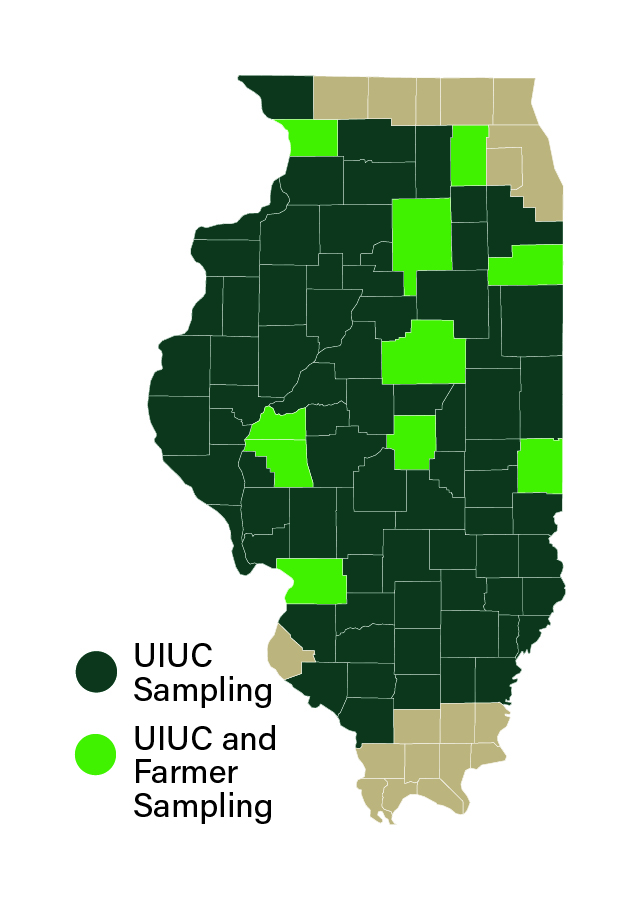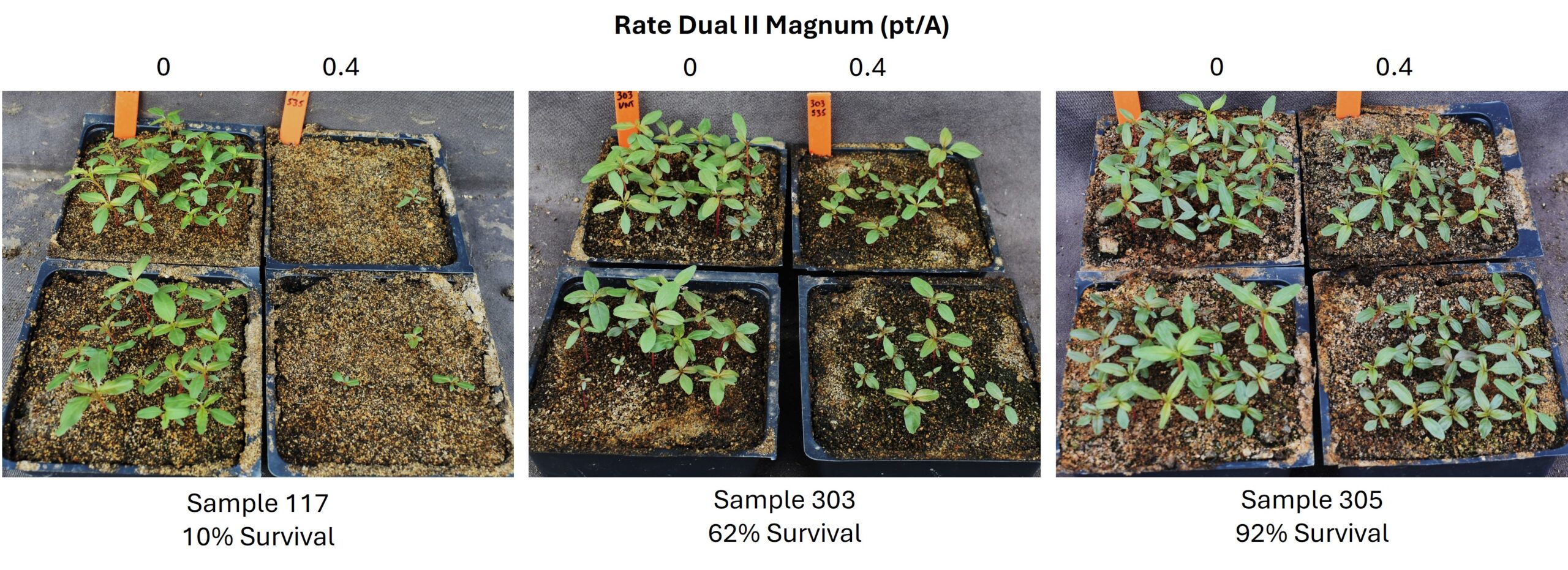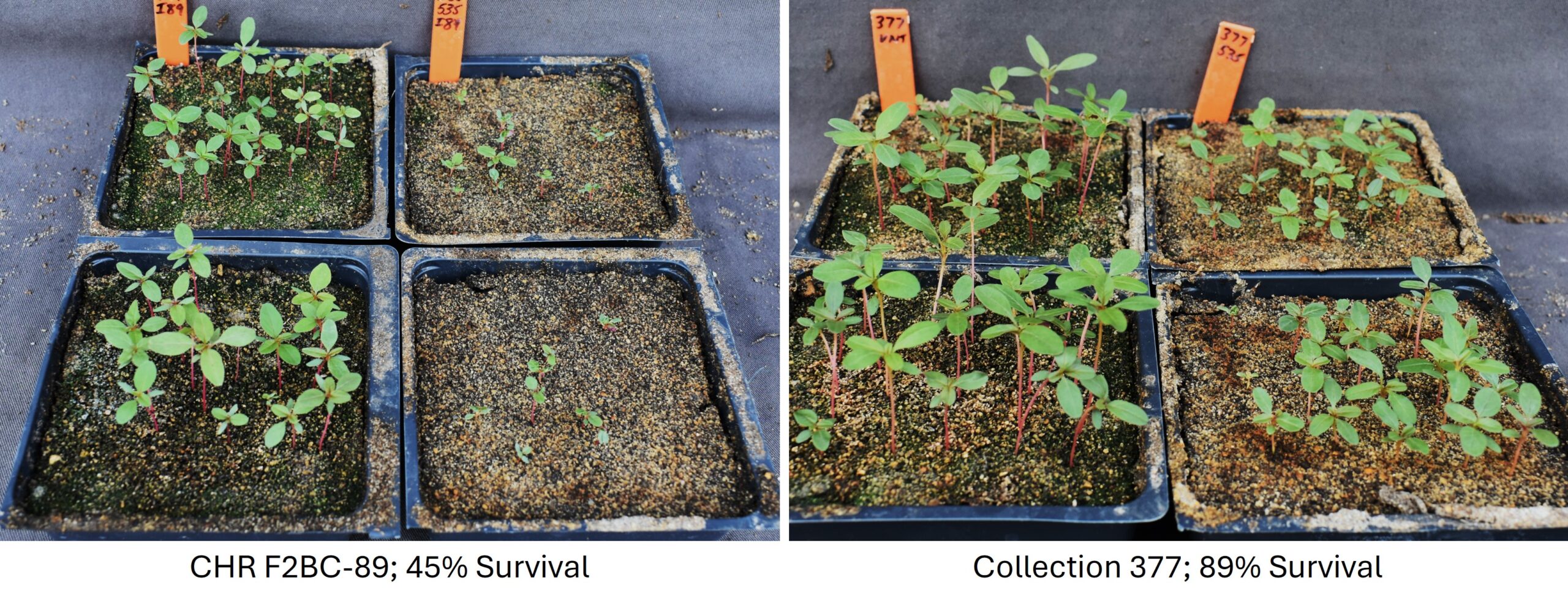Project Leaders: Aaron Hager and Travis Wilke, University of Illinois
Purpose: Group 15 herbicides are currently known for providing residual control of waterhemp, but this research helps to determine if that statement will hold true into the future. The research team is studying waterhemp populations across Illinois to determine if offspring already show notable resistance to Group 15 herbicides.

Waterhemp populations were collected from counties across the state of Illinois in the fall of 2023.
Approach: In fall 2023, waterhemp seed was collected from soybean fields across Illinois. Researchers screened the waterhemp populations in the greenhouse to determine which contained resistance. This process involves growing the plants after a preemergence application of a Group 15 herbicide (Dual II Magnum) at a discriminating dose – the amount of herbicide that controls a sensitive population, but not a known-resistant one (Figure 1). If a population shows the same or less control than the known-resistant population at the discriminating dose, it is moved to the next phase of research to confirm resistance (Figure 2). This research will conclude in 2025.
Results: Of the 45 populations evaluated to date, 20 (44%) will be advanced to the next level of screening. Control of several populations was exceptionally low, indicating a higher frequency of resistance compared with the known resistant population. These results suggest farmers need earlier postemergence herbicide applications since the length of soil residual control from Group 15 herbicides will be shorter where resistance occurs. This project also highlights the value of integrated weed management and using additional preemergent herbicides for waterhemp control.
It is important to share that this concept applies to all Group 15 herbicides, not just Dual II Magnum. Switching to a different Group 15 herbicide is not a viable solution. Farmers should evaluate fields where residual control from Group 15 herbicides is lacking. Scouting should focus on eliminating early “escapes.” While the solution will vary by farm, the approach should not. Resistance to Group 15 herbicides is suspected to be significantly more widespread than originally believed. These findings support the continued recommendation of a zero-tolerance mindset. Each field should be managed so that the length of residual control does not further decrease. This can be achieved by eliminating all surviving waterhemp and using integrated weed management practices to reduce selection pressure to herbicides.
Key Takeaway: Researchers found widespread resistance to Group 15 herbicides; farmers need to have a zero-tolerance approach to escapes to prevent further loss of residual control.

Figure 1 shows the responses of different waterhemp populations to application of Dual II Magnum compared to untreated population on the left of each photo. At the discriminating dose of 0.4 pt/A, populations have demonstrated great variability in control. Survival percentages are calculated based on live plants at ten days after planting and herbicide application. Photo Credits: Travis Wilke

Figure 2 shows a comparison with a confirmed herbicide resistant (CHR) population. CHR F2BC-89 was provided by Isabel Werle in Dr. Tranel’s lab and was developed from one of the original populations with confirmed resistance to Group 15 herbicides. While survivors are stunted, a survival rate of 45% was determined. Populations, such as 377, that demonstrate this, or greater survival are moved to the next phase of research to confirm resistance. Photo Credits: Travis Wilke


 and then
and then